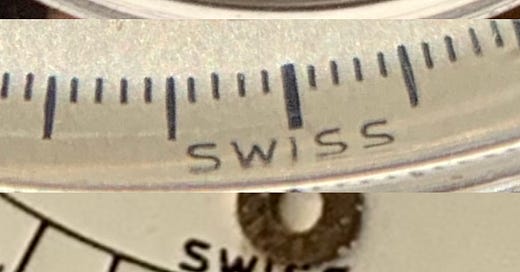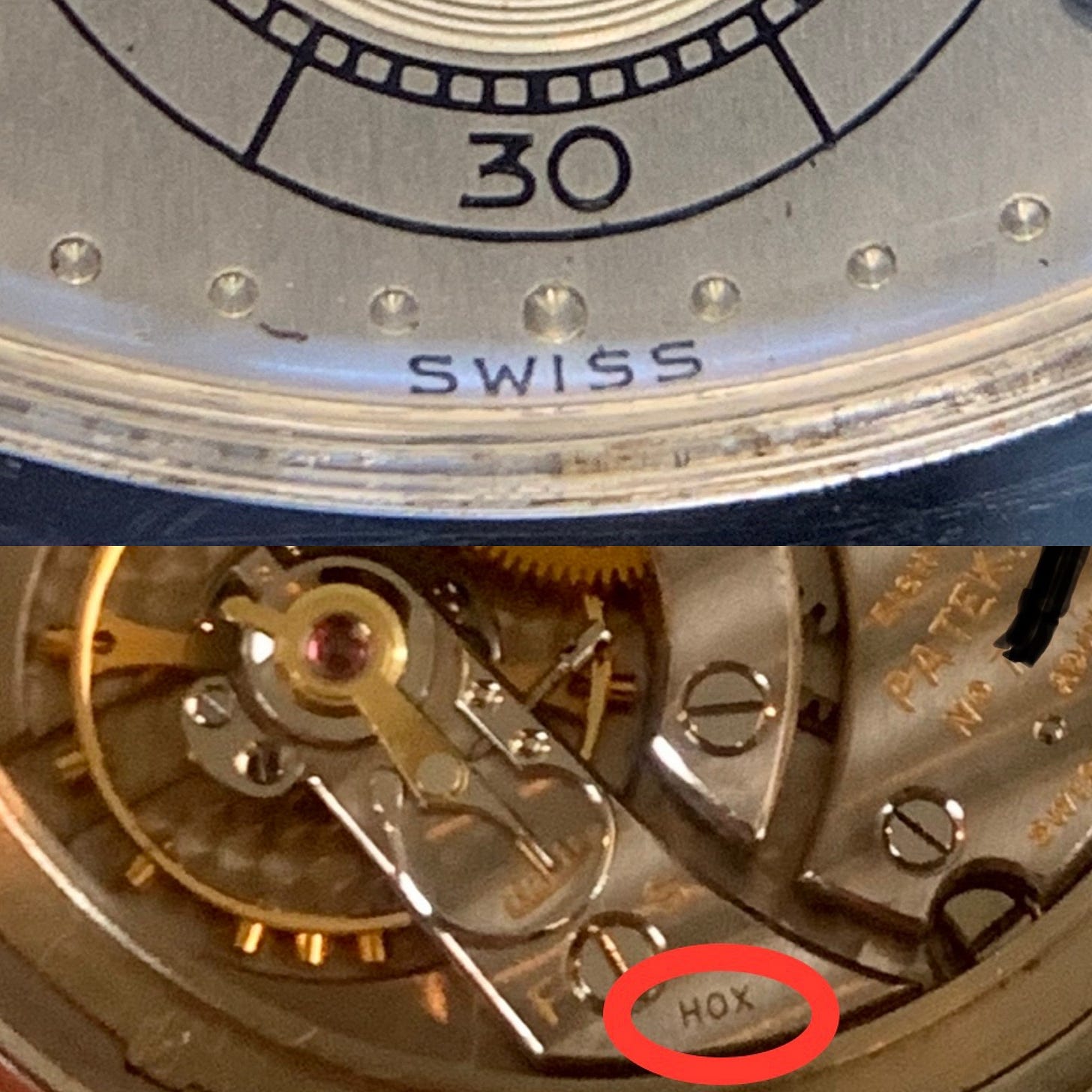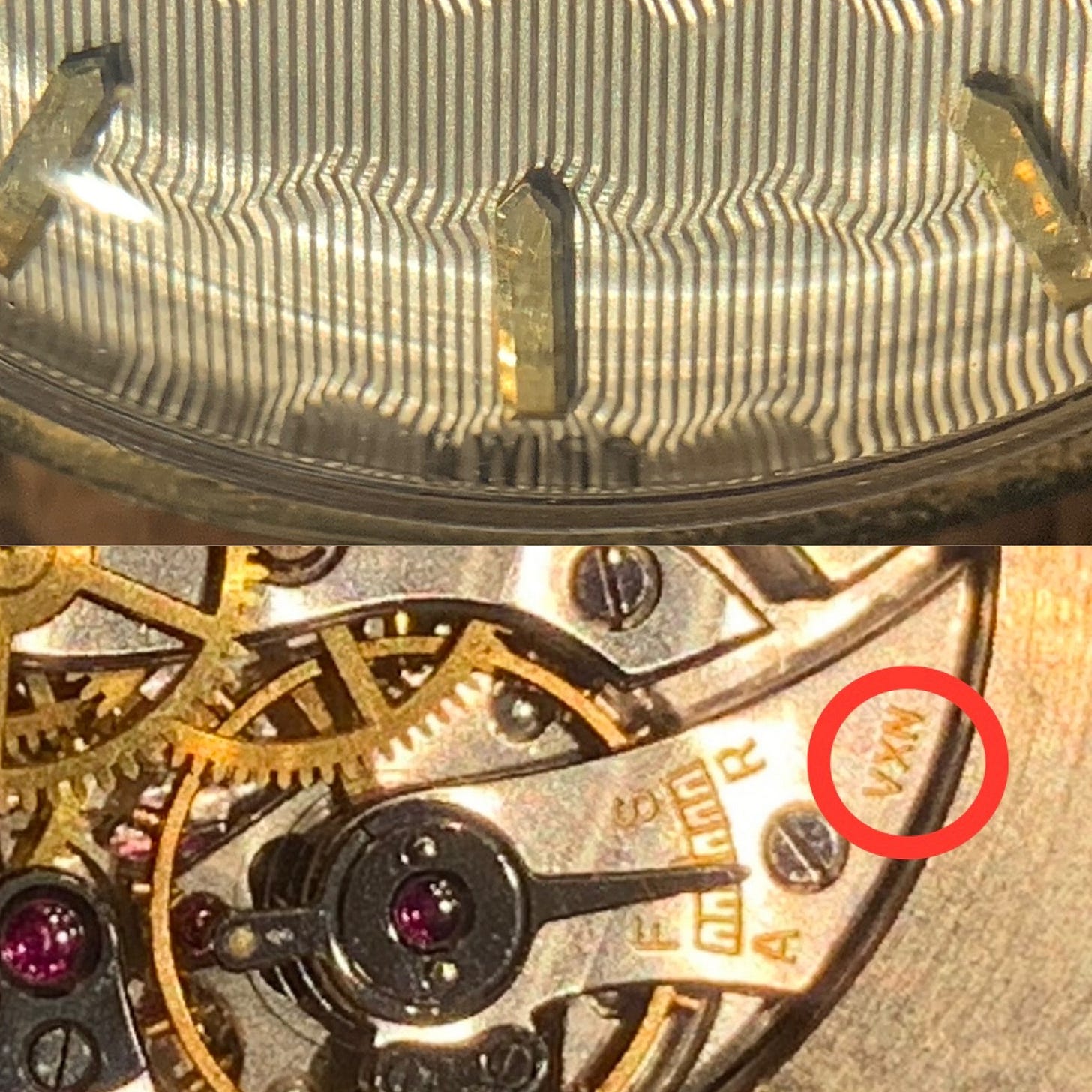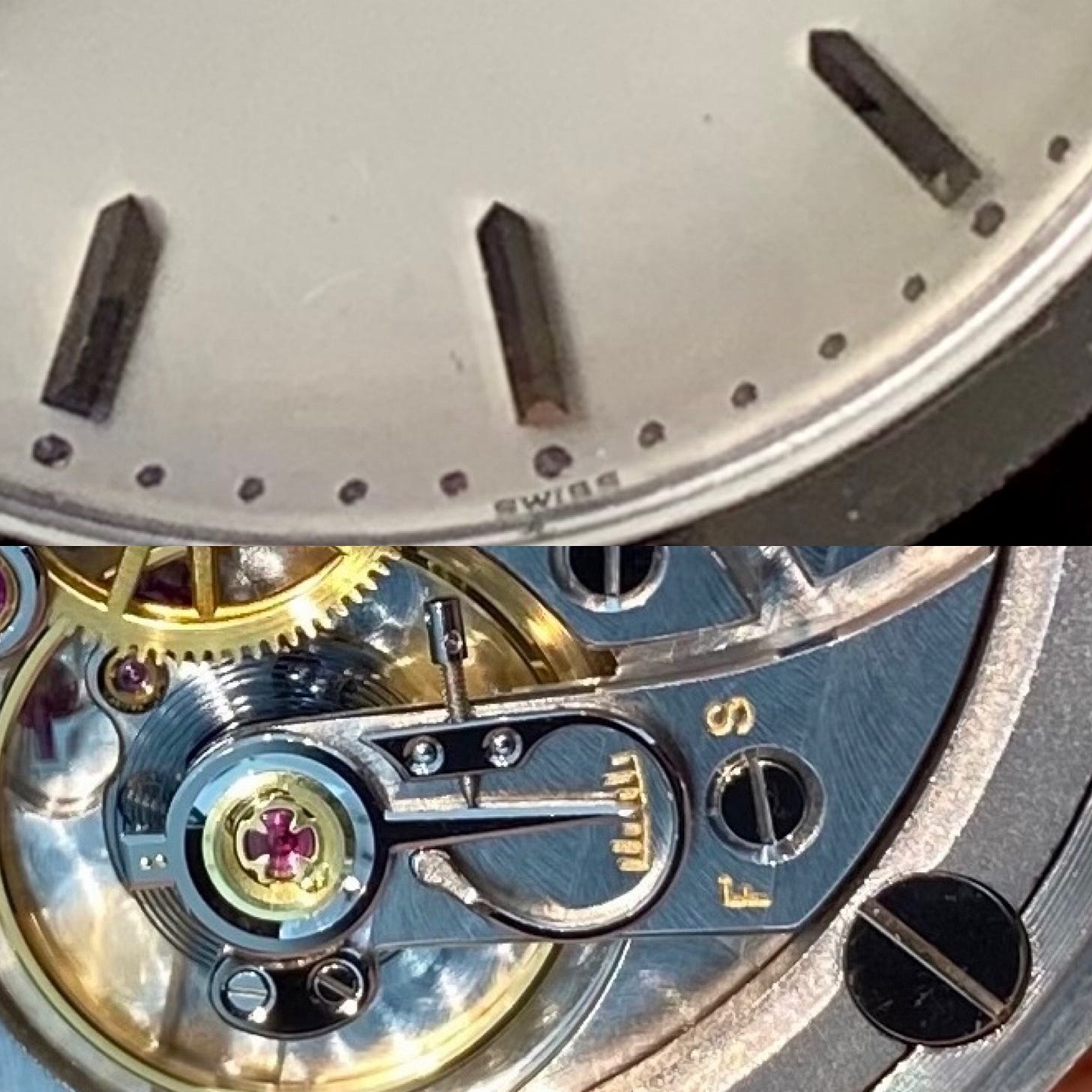(Top-Bottom: Patek ‘50’s 2509A @wirelug, ‘50’s 2508A, ‘50’s 1463J)
The question
An interesting subject pondered occasionally in collector circles is around the printed ‘Swiss’ seen at the bottom of some Patek and Vacheron dials that were enameled, engraved and created by Stern Freres for the Genevan manufactures in the ‘40’s to early ’60’s. It seems one sporadically observes a printed ‘Swiss’ on the bottom of some dials and yet not on others from the same era on a given reference.
For example, why in the picture above of 3 Patek references from the same ‘50’s era do 2 have ‘Swiss’ at the bottom, while the 2509A from the same era does not? Is it just random chance that some dials were produced with this declaration? I’ve raised this question in the past and couldn’t quite get a satisfactory answer, so was motivated to do some research based on my own curiosity and relative lack of publicly available information on the subject. I’ve attempted to document with pictures and through reference to known examples. Let’s explore and observe details that I’ve used to support some hypotheses and conclusions.
Relative scarcity
So, what’s the mystery? I came across an interesting post about the subject, written by @vintagewatchesarchive on Instagram a few years ago and specific to the iconic Patek 1463 reference. Click Here to read. Since the post was published and as of this writing, there are now believed to be 15 known ref. 1463 examples with ‘Swiss’ and 2 known with ‘Fab Suisse’ dials. This example Here was most recently auctioned by Phillips in Geneva . An additional example of a rarely seen “Fab Suisse” Patek dial is shown Here on a ‘58 3417 from a past Christies auction. For the 1463 reference in particular, it’s safe to say 17 known examples bearing a ‘Swiss’ or ‘Fab Suisse’ mark is certainly rare and represents approx. 6% of the current ref. 1463 examples seen. The ‘Swiss’ dial examples appear to have been destined for sale in the US market or made per special request for an end customer in the US market, whereas the ‘Fab Suisse’ denotes examples imported to France (noted by the two French hallmarks on the case backside).
Import markings
So why do I believe the ‘Swiss’ dials were for US market watches? For Patek references of this era imported to and sold in the US bearing the ‘Swiss’ dial, we often observe a HOX or PXP engraving on the balance cock, or sometimes on the inside of the caseback. Both of these markings were the US market import stamps for Patek in the ‘40’s and ‘50’s (thereafter I believe just HOX continued). The combination of “Swiss” on the lower dial and HOX on the movement is noted on respective late ‘40’s 565 A HP (Breguet dial) Fig. 1 and late ‘50’s 2508 A (Type 1 geometric dial) Fig. 2. A 2499 with the import on inside of caseback is referenced in this auction result Here.
*Note: We also observe some examples in the market, including a ‘50’s ref. 1463 sold recently at auction with a HOX on the movement and lacking a printed ‘Swiss’ on the lower dial. Click Here for details. In my subjective opinion, it could be due to past dial restoration(s) that removed the more fragile printed ‘Swiss’, while retaining the indelible engraved, enameled signature and related markings. That is my hypothesis based on an understanding of the various restoration methods employed over time to include chemical cleaning, abrasive sanding to remove aging signs, resurfacing of the top silver layer and re-lacquer application of the original zapon top protective layer . To various degrees any of these could have been used and most likely would have had an impact to non-indelible, printed features on such examples.
Fig. 1
Fig. 2
This practice of using a printed ‘Swiss’ on the lower dial segment for the US market wasn’t limited to Patek. Note this engraved, enameled Vacheron from the mid ‘50’s in Fig. 3, which shows a printed ‘Swiss’ (albeit with crystal edge distortion) at the dial bottom and VXN engraved import mark on the movement. VXN was the Vacheron & Constantin import stamp for the US market.
Fig. 3
Expansion of printed ‘Swiss’ dials
Anecdotally, it seems the presence of a printed ‘Swiss’ on the lower dial became more customarily seen across various markets in the ‘60’s and was a standard by ‘67. Why this change came about from certain destination markets to a more common practice and eventual standard is not entirely clear to me, but it may have to do with laws introduced requiring a Swiss designation on the dial for watches containing 50% or more of their parts to be made, cased and inspected in Switzerland. This practice could have been a tactic to further differentiate Swiss made watches as quartz watches from Asia were being researched, then ultimately manufactured and introduced to the market. I’m aware of Patek examples sold to non-US markets as early as ‘63 with a printed ‘Swiss’ at the lower edge of the dial. Fig. 4 illustrates this observation on a ‘69 Patek 570G which is lacking a US import mark on the movement, as it was originally destined to another country and yet bears a printed ‘Swiss’ on the dial.
Fig. 4
Summary
The conclusions I have reached are the US and France seem to be the a) import markets or b) destinations of special requests to end customers during the earlier era through at least the ‘50’s and likely early ‘60’s, where a ‘Swiss/Fab Suisse’ notation was respectively applied on the dial to signify origin of manufacture. Aspects to observe on examples from this time to determine correct markings and originality are based on owned and handled examples, in addition to study of other examples known in market to reach conclusions. In my opinion, the relative scarcity of these marked dials across references seen presently up to the early ‘60’s is a reflection of these factors:
Limited markets requiring this dial marking at the time of original production.
Low numbers surviving and known in market today.
Possible dial restoration removed the printed dial marking originally on examples imported to those markets.
Swiss dial markings became more uniformly seen across markets at some point in the ‘60’s.
Because we don’t have the ability to go back in time, the above certainly don’t intend to force all possibilities into a standard one size fits all box and are meant in spirit to share some likely conclusions that may not be all encompassing. While there are likely variations or valid and correct exceptions that have other explanations, I share my observations as a collector who believes understanding the details is important. Learning when new, factual information is presented also matters. If anyone has additional information on this subject, I would welcome contributions to update or edit as necessary. Please subscribe for more to come here on my Substack account and follow me on Instagram if you find this type of content interesting.
🙏 for reading,
@aircooltime








